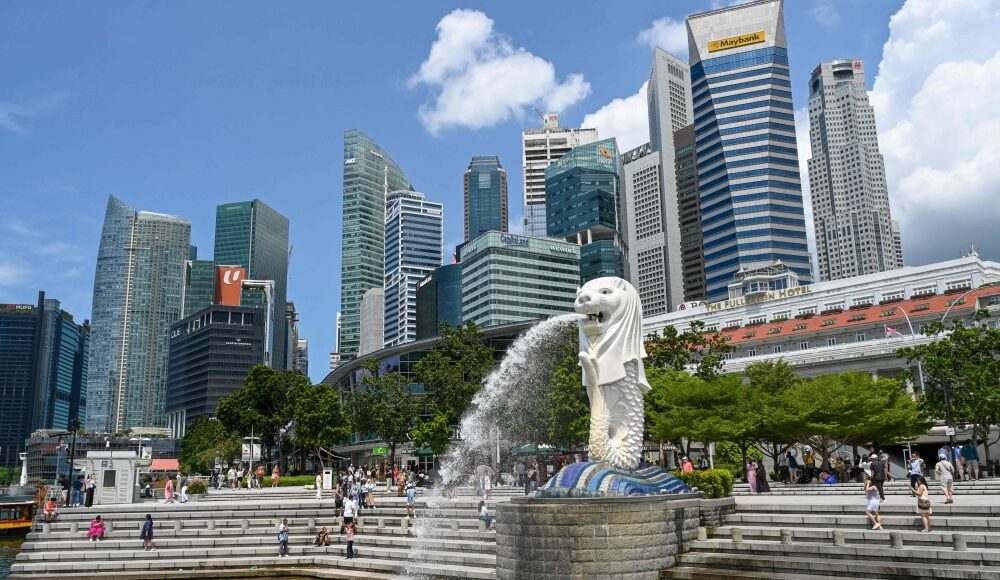MAY 1 — As 2025 unfolds with unsettling global undercurrents, three elections in the Asia-Pacific-Singapore and Australia on May 3, followed by the Philippines on May 12 – have taken on outsized significance. These votes are not mere domestic political events.
They are unfolding in the context of the worst US market instability since the 1970s, with Wall Street reeling from the second coming of Donald Trump. His return has triggered fresh tariffs, fiscal unpredictability, and growing talk of recession — with the Dow down 6.8 per cent, the S&P 500 down 7.3 per cent, and the Nasdaq falling a dramatic 11 per cent in his first 100 days.
Although the Trump administration recently announced a 90-day pause on new tariffs, markets, consumers, and governments alike are far from reassured. Instead, prediction markets now place a 74 per cent probability on a US recession by year’s end. At home, consumer confidence in the US is at its lowest since 2020, echoing the early pandemic panic, while empty shelves in major cities signal not logistical glitches but an economy hollowed out by fear.
In this high-stakes climate, voters in Singapore, Australia, and the Philippines are casting their ballots amid concerns that go well beyond their borders. How these nations vote will reveal much about the regional appetite for continuity, change, and the ability to withstand geopolitical crosswinds. The questions are immediate: Can Australia and Singapore withstand inflationary pressures and global fragmentation? Will the Philippines sink deeper into political dynasties and feuds—or find a new political equilibrium?
Singapore: Generational shift meets geopolitical anxiety
On May 3, Singapore’s citizens will head to the polls in what is arguably their most consequential election since the 1990s. It is the first general election under Prime Minister Lawrence Wong, who took over from Lee Hsien Loong in 2024 as part of a long-planned political succession. While the ruling People’s Action Party (PAP) is expected to retain power, the political environment has shifted — quietly but firmly.
Singaporeans are feeling the pinch from rising costs of living, compounded by inflation, higher housing prices, and a sense of regional economic vulnerability. While the city-state has traditionally thrived on its role as a global hub, the uncertainty created by Trump’s tariffs, Beijing’s tech assertiveness, and global decoupling pressures have all forced Singapore to navigate an increasingly narrow path between China and the United States.
Singaoreans head to the polls on May 3, 3035 in what is arguably their most consequential election since the 1990s, marking the first vote under Prime Minister Lawrence Wong. — AFP pic
The PAP’s challenge is twofold. First, it must show that it can still deliver material stability in a volatile world. Second, it must earn the trust of a younger generation more skeptical of state paternalism and more attuned to global crises like climate change, artificial intelligence disruption, and digital rights. The Workers’ Party and Progress Singapore Party may not overthrow the PAP, but their share of the vote will serve as a referendum on the new prime minister’s political legitimacy and vision.
Singapore’s key concerns are pragmatic but profound: Can the government maintain neutrality in a divided world? Will it protect Singapore’s role as a trusted intermediary in regional and global trade ? And can it update its social compact to reflect new realities in housing, education, and inequality?
Australia: Inflation, identity, and a split between the Pacific and the West
Also on May 3, Australians vote in a federal election that pits Prime Minister Anthony Albanese’s Labor Party against a revitalised Liberal-National Coalition, led by a conservative bloc seeking to reclaim power amid widespread cost-of-living frustrations.
Australia’s economy has faced heavy turbulence in early 2025. Although it weathered the worst of Covid-19 relatively well, the renewed global protectionism under Trump, coupled with China’s slower-than-expected rebound, has undermined Australian exports — from minerals to education to agriculture. Trump’s tariff policies, while not directly targeting Australia, have disrupted global commodity flows and investor sentiment, raising questions about Canberra’s reliance on traditional Western partners.
Albanese has sought to strike a balance between defending national interests and re-engaging the Asia-Pacific through diplomacy and climate cooperation. But he faces criticism for being “too soft” on China and “too dependent” on the United States. This echoes a deeper, unresolved question in Australian foreign policy: Is Australia a middle power that leans into its Asia-Pacific geography, or a Western outpost forever tied to Anglo-American strategies?
The AUKUS pact, signed under a previous government, has been both a strategic boon and a diplomatic burden. While it secures defence cooperation with the US and UK, it has alienated several ASEAN members and the South Pacific, who see it as a return to Cold War bloc politics. Moreover, Trump’s erratic leadership in his second term has cast doubt on the reliability of American strategic commitments, leaving Australia exposed and uncertain.
Domestically, Albanese must answer for inflation that has hurt middle- and working-class families. The opposition has offered few policy specifics but promises stronger borders, lower taxes, and a return to “order.” If voters prioritise immediate relief over long-term vision, Labor could lose its majority.
The Philippines: A midterm of dynastic tensions and geopolitical tugs
The Philippines will follow suit on May 12, with midterm elections that will effectively serve as a referendum on the embattled presidency of Ferdinand “Bongbong” Marcos Jr. His administration, once buoyed by nostalgia and dynasty, is now grappling with a credibility crisis. Inflation has eroded real wages, and a recent infrastructure-related corruption scandal has damaged the government’s technocratic image.
But the deeper drama lies in the rivalry between the Marcos and Duterte families, with Vice President Sara Duterte positioning herself as the anti-Marcos candidate for the 2028 presidential race. The May midterms could decide whether she gains control over a Senate and Congress loyal to her interests — or whether Marcos consolidates enough institutional support to finish his term with a freer hand.
Both Washington and Beijing are watching the Philippines closely. Manila’s renewed alignment with the US, including expanded base access for American troops, has alarmed China and placed the country at the centre of South China Sea tensions. Yet the volatility of Trump’s leadership may push the Philippines to hedge its bets again — potentially restoring elements of Duterte-era strategic ambiguity.
Voters, however, may be more concerned with bread-and-butter issues. Job insecurity, public health, and education remain top priorities. Should Sara Duterte-aligned candidates perform well, expect an intensification of intra-elite conflict — raising the risk of paralysis in governance.
Why these elections matter to the world
The synchrony of these three elections during the same fortnight in May is historically rare — but symbolically potent. They reflect a region at the crossroads of economic transformation, security dilemmas, and political realignment.
For the United States, recently elections are crucial in gauging which Asia-Pacific allies are still willing to back its Indo-Pacific strategy under Trump’s confrontational framework.
As for China, the outcome will help recalibrate its charm offensive, especially if Australia and the Philippines reveal signs of strategic fatigue or economic backlash.
In the case of ASEAN, the elections will indicate the region’s internal cohesion — or fragmentation — in the face of great power contestation.
Most importantly, these votes reflect the global South’s struggle for agency in a world where old empires are resurgent and new multipolar arrangements remain embryonic.
Whether through Singapore’s technocratic prudence, Australia’s search for an identity, or the Philippines’ dynastic tug-of-war, these elections are more than domestic rituals. They are a referendum on how the Indo-Pacific will face an age of global disorder.
In short, the world cannot look away. These ballots, cast amid market turmoil and geopolitical flux, may offer a glimpse into how democracy — and governance — will evolve under pressure. And despite a pause on tariffs, the worse is not over.
The storms will continue. The region must now decide whether to weather them separately — or chart a shared course through them.
* Phar Kim Beng is Professor of ASEAN Studies at the International Islamic University Malaysia, and Senior Research Fellow Asia Europe Institute at the University of Malaya
** This is the personal opinion of the writer or publication and does not necessarily represent the views of Malay Mail.





